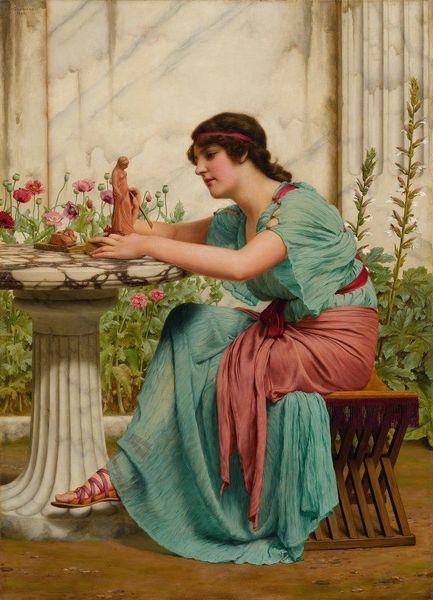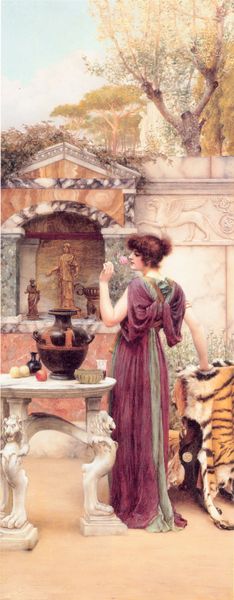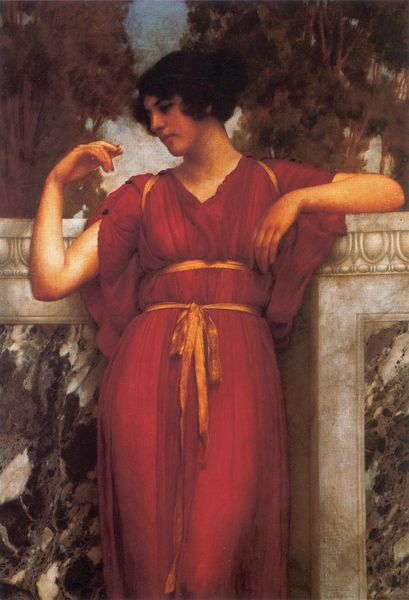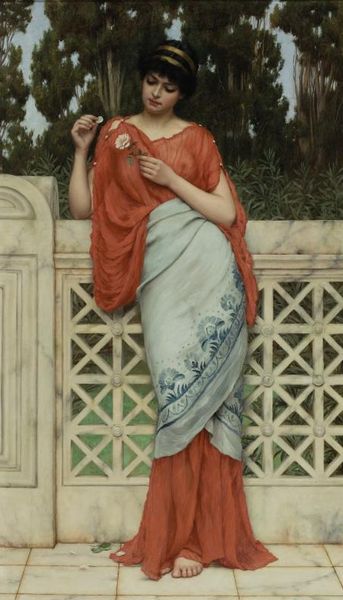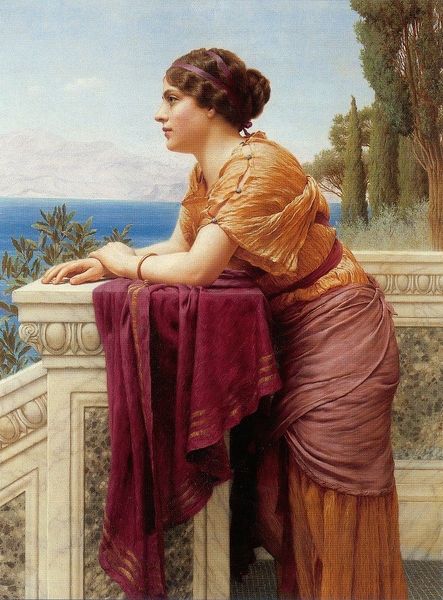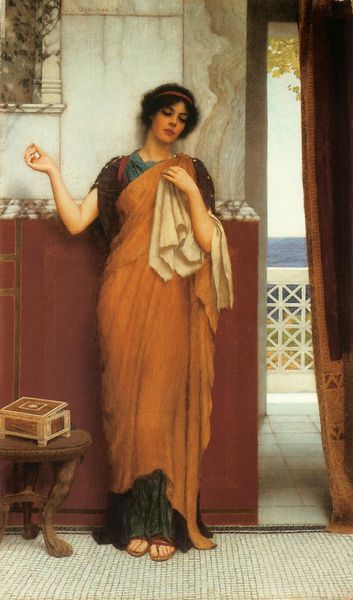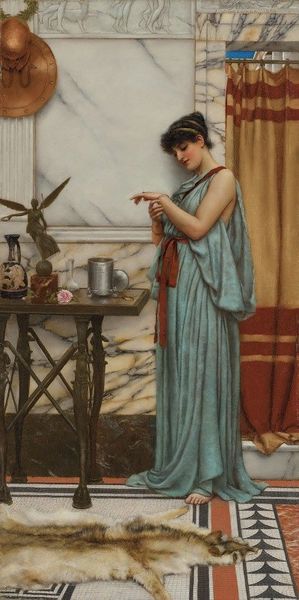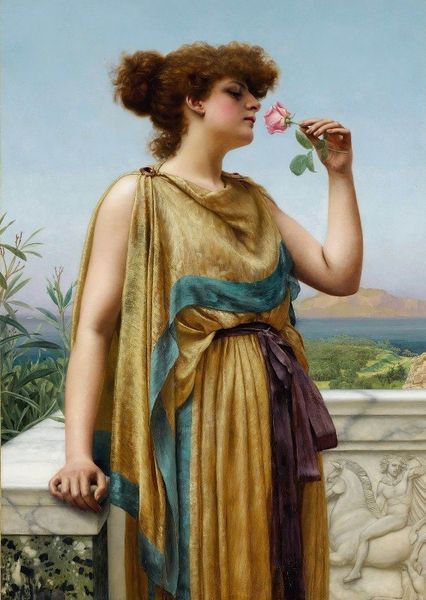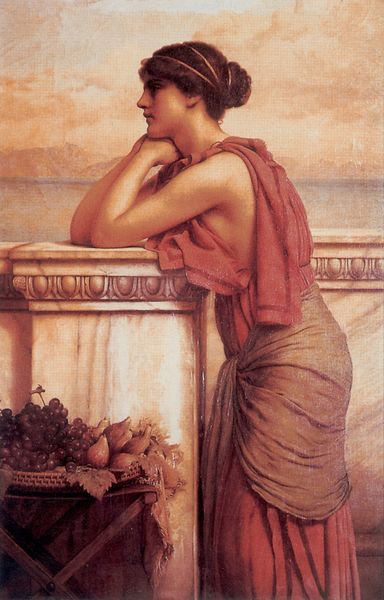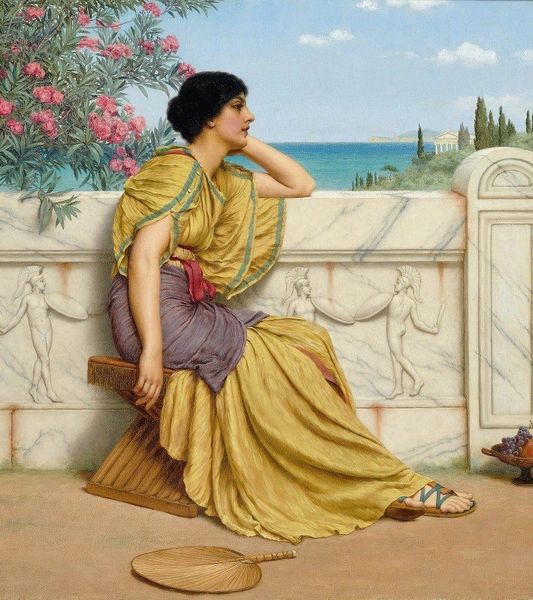
Copyright: Public domain
John William Godward painted 'An Idle Hour' at a time when institutions of art were in transition from academic tradition to modern innovation. Godward was part of the late Neo-Classicist movement, known for its idealized and romanticized visions of the ancient world. This piece reflects a nostalgia for the past, particularly ancient Rome, but it also subtly reflects on the social structures of his own time. The woman's dress is reminiscent of ancient Roman garb, but her relaxed pose in a garden is characteristic of wealthy women in Victorian England. Her 'idle hour' is a sign of her privilege. This idealization of leisure could be read as a commentary on the unequal distribution of wealth and labor during the Industrial Revolution. As historians, we examine not just the painting, but also the social and political context in which it was created and received. We need to consider social class, political movements, and economic structures to grasp the painting’s complexities.
Comments
No comments
Be the first to comment and join the conversation on the ultimate creative platform.
